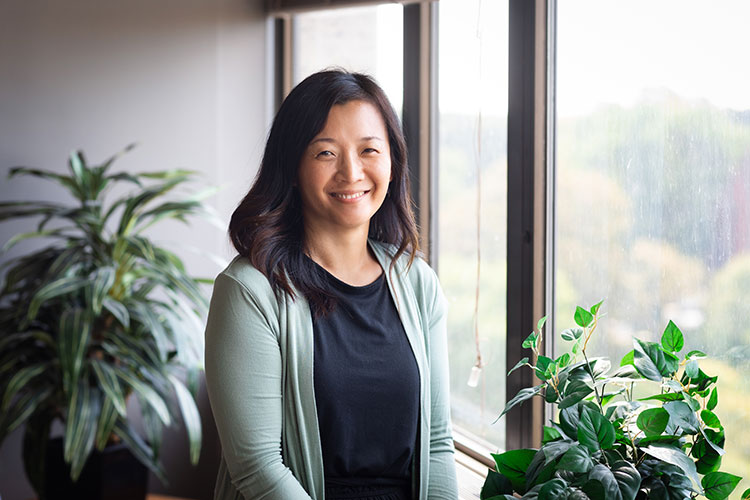American Sign Language is unique in that speakers can communicate in three dimensions.
“They use signs, but also facial expressions and body movement,” said Sunny Brysch.
Brysch came to UWM from the University of Minnesota Duluth to lead the university’s ASL program, one of the few programs offering a Bachelor of Science (or bachelor’s degree) in the language in the Midwest. She will be a clinical assistant professor in the Department of Teaching & Learning.
She started at UWM in mid-July but had been meeting with the staff virtually even before then.
Brysch’s career started out in a totally different direction from education. She originally planned to work in clinical mental health, planning to focus on families and children. She earned a master’s degree in social work from Augsburg University in Minnesota.
While working on a certification in ASL Studies at Saint Paul College in Minnesota, she did an internship with a high school ASL program. “That experience really impressed me and was the first step in a new direction.”
She moved on to teaching first at the high school level, then as an adjunct professor at the university level. Before joining UWM, she taught ASL and coordinated the University of Minnesota Duluth’s ASL program.
She doesn’t often talk about this, but Brysch’s personal immersion in sign language started when she was four years old. “Sign language was my first means of communication,” she recalled. She was born in South Korea to parents who were deaf. They were farmers who had little education and were unable to care for her, so they made the difficult decision to put her up for adoption to give her a better life.
She was adopted into a Minnesota family. Her adoptive mother was deaf, so she learned American Sign Language, with the help of her mom and “Sesame Street.”
She’s excited, she said, to become part of UWM’s program, which averages around 500 students every year in beginning through advanced classes.
ASL provides a foundation for a variety of careers – students can move on to the university’s Interpreter Training Program (also a four-year program) or healthcare, law enforcement, social work and other areas, according to Brysch.
Some students just take ASL to fulfill their language requirement. Or theater majors may take courses because it helps them train their bodies to communicate through movement.
UWM’s program also incorporates deaf culture, literature and history as part of students’ learning. The history can be quite interesting, said Brysch. For example, the island of Martha’s Vineyard once had a thriving community where a variation called Martha’s Vineyard Sign Language was routinely spoken – both by deaf and hearing members of the community.
Brysch is looking forward to continuing to build relationships with other schools and colleges at UWM, similar to one that already exists with the College of Nursing. And, of course, students are out in the local deaf community regularly, helping build partnerships.
Events like the annual Deaf Awareness Week Wisconsin bring together the deaf and hearing communities to celebrate the language and heritage, and continue to build awareness, she added.
“I’m looking forward to seeing the potential of what we can do.”
